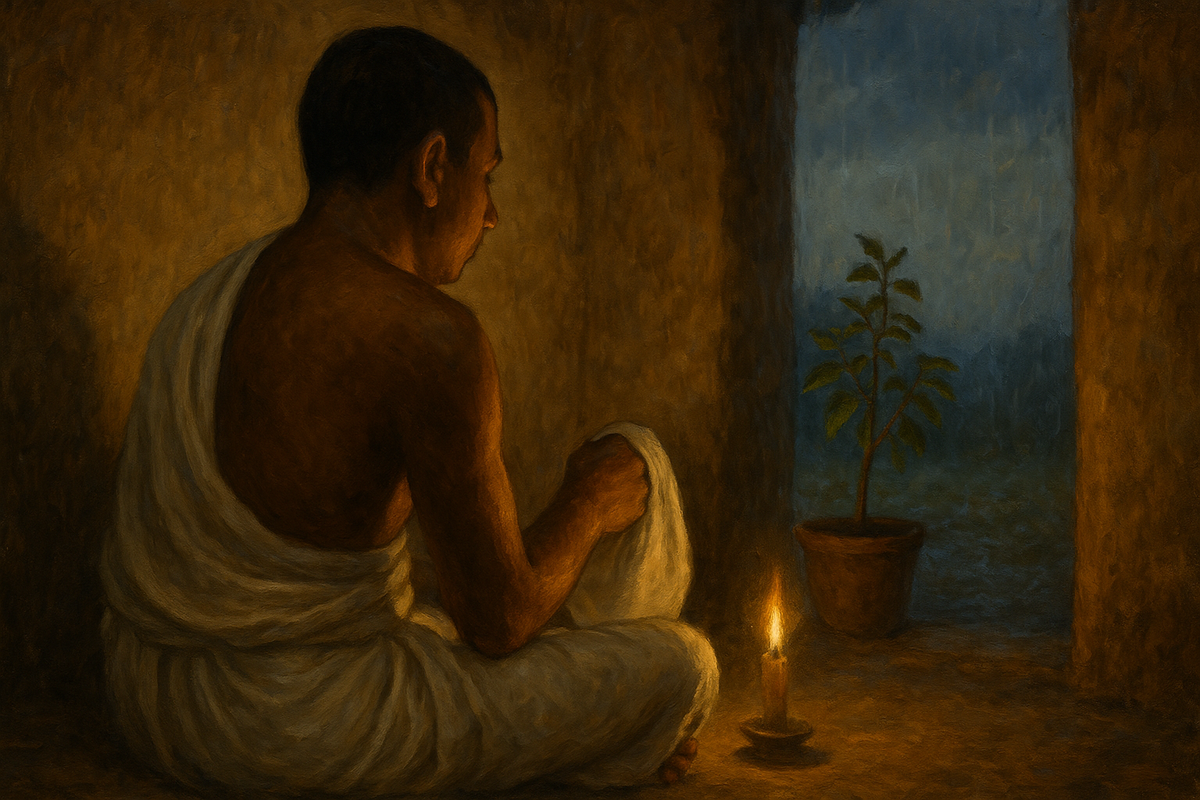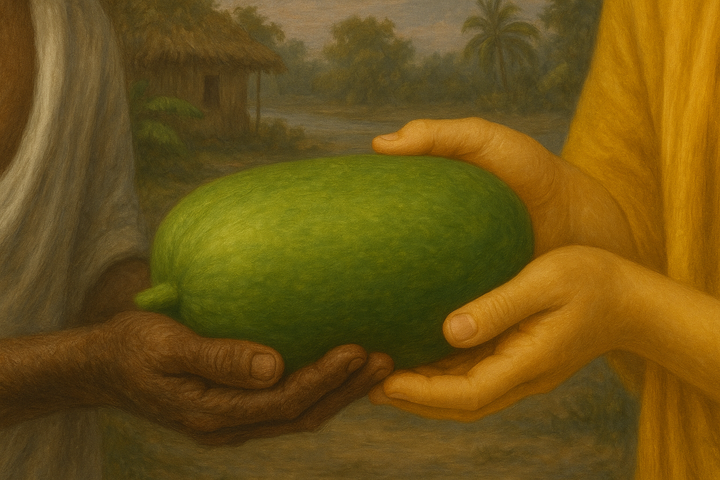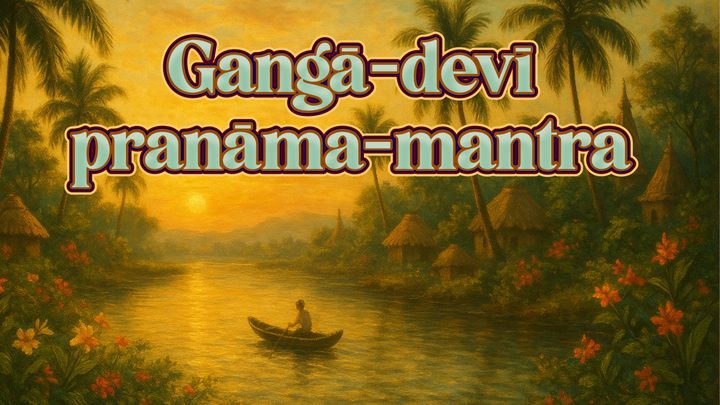Caturmāsya Begins—Planning Out Our Śikṣāṣṭaka Program

Caturmāsya begins tomorrow—or, if you’re among those who start on Śayana Ekādaśī, then it’s already underway. Personally, I’ve found that unless I’m following a vrata with others, I struggle to keep it going. Since I’m kind of on my own this year, I’m leaning on our regular online morning class as a support.
For this year’s Caturmāsya program, I want to center it around something we’ve already been focused on: Śikṣāṣṭaka and Bhajana-rahasya.
Śrīla Bhaktivinoda Ṭhākura writes that the Śikṣāṣṭaka outlines the sequence of Śrī Kṛṣṇa’s līlās (ei śikṣāṣṭake kahe kṛṣṇa-līlā-krama), and by following this Śikṣāṣṭaka sequence in one’s bhajana, Kṛṣṇa’s pastimes begin to manifest (ihāte bhajana-krame līlār udgama). He then goes on to clearly describe a systematic methodology for following Śrī Caitanya Mahāprabhu's teachings (śikṣā) in Śikṣāṣṭaka. He says that if you want to attain perfection, you must carefully follow this progressive path of the Śikṣāṣṭaka (sāvadhāne krama dharo ĵadi siddhi cāo), and that by doing this while observing the character of sādhus, you will attain pure intelligence (sādhur carita dekhi’ śuddha-buddhi pāo). Then, having obtained your spiritual body and performing bhajana in sequence, the joy of service throughout the eight periods of the day is effortlessly attained (aṣṭa-kāla sevā-sukha anāyāse mile).
In that section (1.10) of Bhajana-rahasya, he uses the word krama (meaning order, method, arrangement, sequence, or system) seven times, really emphasizing how Śikṣāṣṭaka should be followed according to the systematic process he outlines.
In many of the maṭhas in Śrīla Bhaktisiddhānta Sarasvatī Ṭhākura Prabhupāda’s line, there’s a practice during Kārtika where, throughout the eight yāmas (divisions of the day), devotees go through:
• The corresponding Śikṣāṣṭaka verse
• Its elaboration in Śrī Caitanya-caritāmṛta
• Supporting verses from Bhajana-rahasya
• And finally, a seed-like verse from Govinda-līlāmṛta for the līlā of that period, along with Śrīla Bhaktivinoda Ṭhākura’s Bengali rendition of it, which appears at the end of each chapter of Bhajana-rahasya.
Here is what I’m preparing for the first yama sādhana (I’ll continue updating this page with new verses from the other yamas as we go through them):
You can find this system clearly laid out in the Kārtika Handbook translated and published by Śrīla Bhakti Ballabha Tīrtha Mahārāja, and even see a full day of aṣṭa-yāma sādhana with him on video or hear the audio.
I’ve never managed to follow that entire program myself, but I’d like to at least start familiarizing myself with it now so that maybe one day I’ll be able to follow it properly, especially when in the association of qualified, serious devotees who are practicing it. This Caturmāsya, I’m thinking we can spend the last 15–30 minutes after our morning class (7–8 AM IST) familiarizing ourselves with it together. So it’s not that we’re actually doing this aṣṭa-yāma sādhana program online, but we’ll be preparing ourselves for following it.
The program throughout Cāturmāsya will be simple:
📖 One Śikṣāṣṭaka verse every fortnight, with focus on:
- Connecting it with Bhajana-rahasya and the yāma system
- Understanding the Sanskrit and Bengali verses word-by-word and how the words connect together
This way, by the end of Caturmāsya, we’ll have covered all eight verses of Śikṣāṣṭaka.
We’ll also aim to complete the Śikṣāṣṭaka commentaries by Śrīla Bhaktivinoda Ṭhākura, Śrīla Bhaktisiddhānta Sarasvatī Gosvāmī Prabhupāda, Śrīla Śrīdhara Gosvāmī Mahārāja, Śrīla Gurudeva, and other ācāryas that we’ve been reading for each verse.
Then, after Kārtika, I’d like to return to the four songbooks of Śrīla Bhaktivinoda Ṭhākura. One of my personal motivations for wanting to quickly get back to that is because it will really help with preparing for the Bhaktivinoda Retreat in mid-February, at his home in Surabhi-kuñja. I’m hoping this program will help me give a better overview of the four songbooks during the retreat.
If any of this sounds interesting, feel free to come along. You can join us live on Zoom or YouTube—or just watch later on my YouTube channel when you have time. I send out the YouTube and Zoom links before we begin each day in the Bhaktivinoda-gīti-dhārā WhatsApp group.
And as always, I love hearing your thoughts, ideas, and inspirations for these online programs, so please feel free to leave a comment below.
I hope you have a deep and successful Cāturmāsya-vrata!
P.S. Here is a nice article by our Śrīla Gurudeva to read tomorrow for Guru Pūrṇimā Day and Śrīla Sanātana Gosvāmī’s Disappearance Day:
And I finally just now finished preparing the rest of the Navadvīpa Vaiṣṇava calendar for Google Calendar. You can subscribe to it by clicking the button below (but for some reason, it only works if you click on it on a computer, not on a phone):



Comments ()